The Transporter Bridge was officially opened on September 12th, 1906 and whilst the key facts about the bridge are well known, I thought I would dig through the newspapers archives in search of interesting and perhaps less well known snippets from the opening year and a couple of years after.
Full Page Article on Opening Day
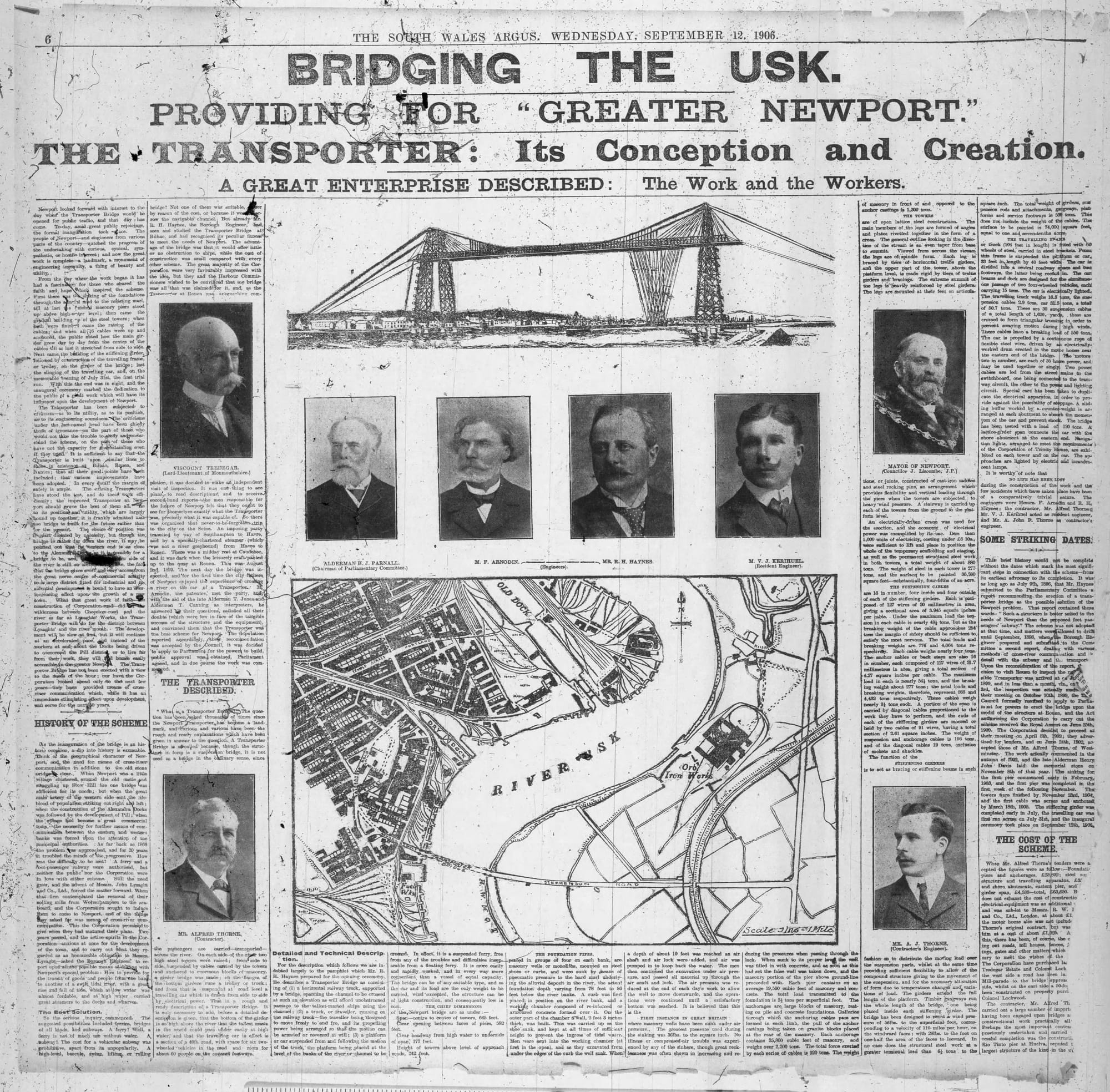
The 33 Bye Laws
When the bridge opened in 1906 there were 33 bye laws covering a range of things. Here’s an example of some of them as published in The Weekly Argus on Saturday June 16th, 1906.
- A person shall not jump onto or off the car while it is in motion.
- No person, vehicle, motor, horse or other animal (dogs are free) shall board the car without paying
- The conductor will instruct people where to be on the car, and a person can’t refuse.
- No loitering or letting their animal be an obstruction.
- No person shall allow goods, cattle, merchandise, luggage or thing belonging to him to remain on the Transporter Bridge for longer than is necessary for making the journey.
- Maximum weight is 13 tons (unless 24 hours notice given)
- All drivers to lead their horses onto and off the car at no more than a gentle walking pace.
- Horses to be secured by a bridle by their owner.
- Carriages, omnibuses or other vehicles prohibited from plying for passengers (unless approved).
- Anyone affected by dangerous, contagious or infectious contagions shall not enter the car.
- No riding upon the pilot-house roof or on the outside rails, buffers or guards of the car.
- No betting or playing any games of chance on the car, landing, or other part of the Transporter Bridge (see below for someone not adhering to this rule).
- No intoxicated passengers.
- No spitting, indecent language or any other nuisance.
- No begging.
- No playing an instrument, singing, dancing, praying, preaching or reading aloud.

Should Lysaghts Employees Use The Bridge For Free?
The main reason for the construction of the bridge was to proved access to Lysaghts steelworks on the east side of the river, although the idea of a crossing had been discussed prior to the steelworks arriving.
Prior to the opening of a bridge a letter appeared in the South Wales Argus proposing the idea of allowing the workforce to travel across the bridge for free. This idea was not welcomed by everyone.
Sir — A letter appeared in your valuable paper a few days ago, containing a suggestion that the Corporation, in order to carry out their agreement with the Messrs. Lysaght should grant their workspeople a free pass to walk over the Transporter Bridge, which would leave the Corporation open to charge everybody for conveyance by the car, as they had previously arranged. If all-comers are carried free, it requires no great prescience to foretell that a deadlock in traffic will be inevitable as children will be there in hundred, to say nothing of the holiday trippers and other visitors from distant towns; and who is to determine the question of priority, when the multitudes are clamouring for a passage across?
Besides, we are officially told the upkeep of the bridge is estimated at about £5,000 per annum, and in face of this, why throw away the revenue to please any firm, when the town is already so heavily burdened with rates?
A RATEPAYER
— South Wales Argus, Wednesday September 5th, 1906
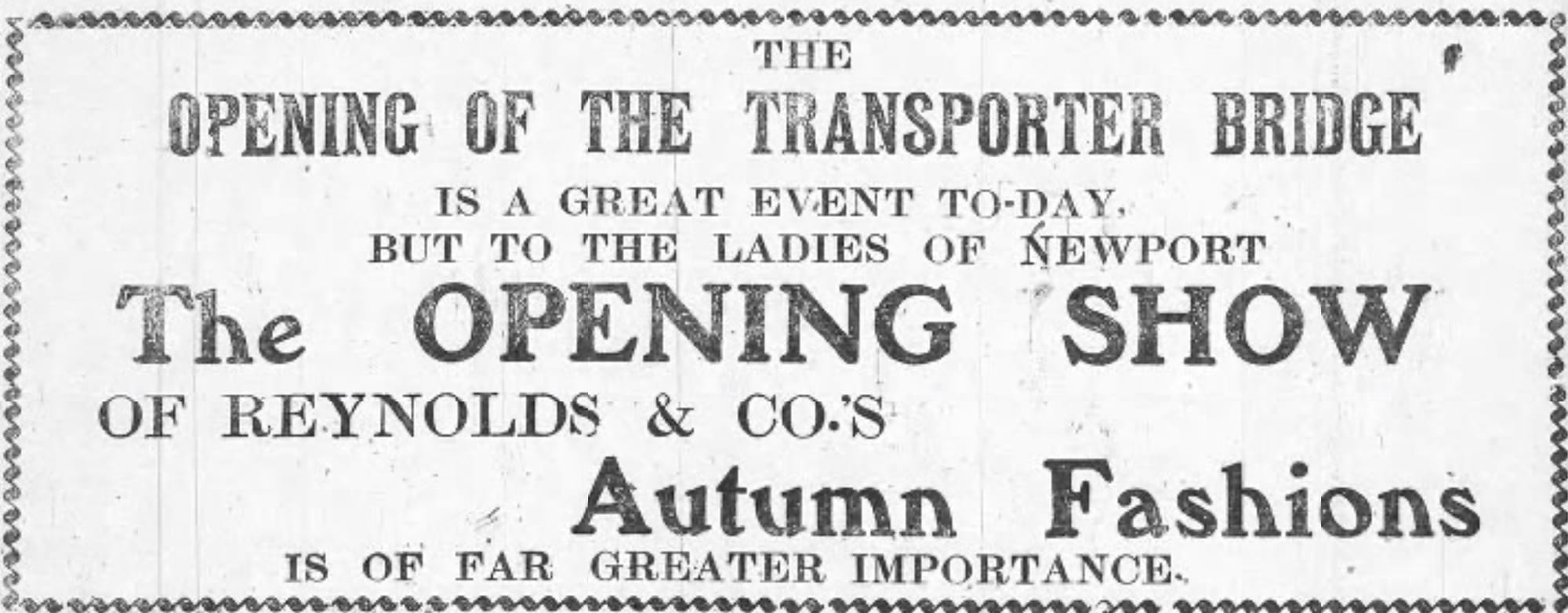
Fares for Plebeians
According to an article in the Western Mail in 1906, during the first week of opening both members of the public and the Corporation were surprised to learn that there were two classes of fares for foot passengers.
It was found by the public, quite as a surprise to them, And almost as much so to the members of the Corporation, that there were two classes of fares for foot passengers — a penny for first class and halfpenny for plebeians. It so happened that at the two last meetings of the corporation there was so much discussion about the general question of whether it should be a toll or free bridge for pedestrians that the point of difference of fares was quite overlooked by the council. At the meeting of the Parliamentary and improvement committee on Tuesday, however, it was decided to recommend the corporation to abolish the dual set of fares and have only one.
— Western Mail, Wednesday 19th September, 1906

Advertise Newport!
In a letter to the Argus an ‘Old Newport Boy’ wrote with the suggestion that the bridge be adorned with big letters advertising the bridge so that it could be seen from afar.
Dear Sir, “Advertise Newport” is the great cry of the present time. Our neighbourhood seems remarkable for great engineering feats. First, the Crumlin Viaduct, in its time, was one of the wonders of the age; then the Severn Tunnel, with the marvellous pumping stations which server to make it safe, caused the country to marvel; and now we have in our own town this new effort of engineering skill. Our dismal prophets, our Ratepayers’ Association and others who can only see the disadvantages of life in general, and Newport in particular, are with one voice shouting out the uselessness of this new toy, which an extravagant Council, composed of all the stupidest men to be found in this stupid town, have most perversely invented, expressly for the purpose of squandering the sensible ratepayers’ money.

Why not use the Transporter to advertise Newport? I was at Weston last month, and there, on an ordinarily fine day, our great bridge could be seen, towering in the distance like a great scaffolding. From all up and down the Channel the great erection is visible. Bow my proposition is not to put three miserable lights on it, but form an immense letters with electric light, save only on a large scale as on the Lyceum Theatre, the word NEWPORT, and then you will have an advertisement indeed. No other town will have its name thus written in letters of fire that can be seen for 40 miles away; and we shall become the talk of the world. As the American say:
“He who would in business rise,
Must either bust, or advertise.”
— I remain, Mr Editor, yours truly,
AN OLD NEWPORT BOY
September 27th
— South Wales Argus, Thursday 27th September, 1906

Within a week, the Empire was showing a film of the new Transporter Bridge in ‘American Bioscope’, an early form of cinema. The video below may well have been the one shown in the advert above.

Naming the Approaches
A Letter from Dr Garrod Thomas
Shortly after opening, a letter was written to the South Wales Argus by Sir Abraham Garrod Thomas (Welsh physician, philanthropist, magistrate, politician and MP), suggesting that the approaches to the bridge be renamed.
Dear Sir, I notice by the map in your issue of the 12th that the two approaches to the Transporter Bridge are named respectively Brunel Street and Stephenson Road. I can conceive that in years or generations to come these two names — immortal in the engineering world — might, linked with the bridge, be chronologically misleading. I would respectfully suggest to the Corporation that to name them “Arnodin Street” and “Haynes Street” would be appropriate and suggestive, and a graceful act.
— South Wales Argus, Friday 14th September, 1906
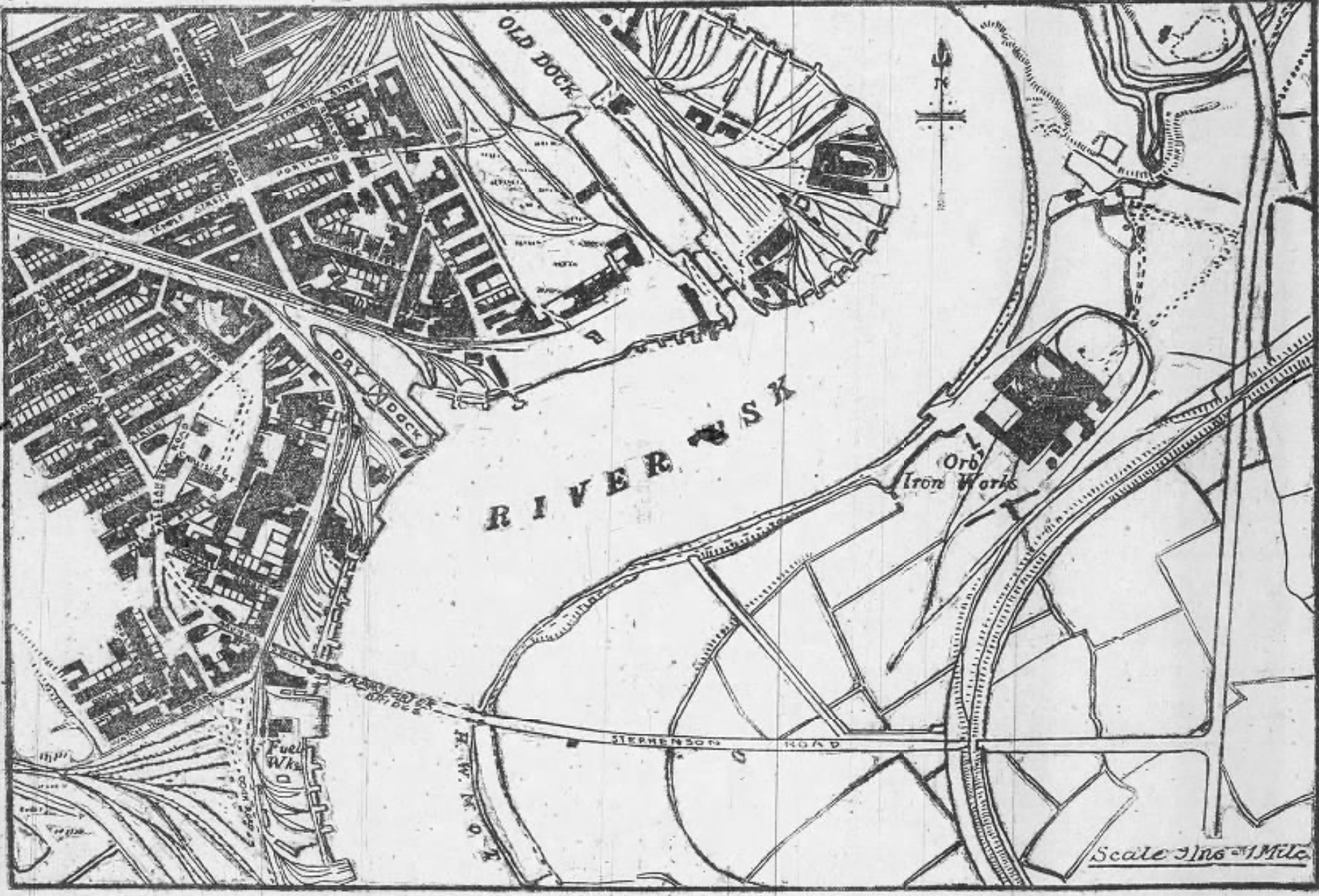
Writer Agrees with Dr Garrod Thomas
A couple of days later another letter agreed with Garrod Thomas’ suggestion but also had a little dig at Newport’s street names.
Dear Sir, there is much to be said in favour of Dr. Garrod Thomas’ suggestion that the names Haynes and Arnodin be substituted for Brunel and Stephenson as names of the respective approaches to the Transporter Bridge. Very much as we revere the memory of the French and Scotch bridge builders, who flourished contemporaneously 60 years ago, there would be grave risk of future generations ascribing the conception and construction of the Transporter spanning the Usk to one of them, were these names to remain.
As Brunel was the architect and builder of Clifton Suspension Bridge, and Stephenson that of the Britannia Tubular Bridge over the Menai Straits, is it not rather incumbent upon Newport To perpetuate the name of Arnodin in association with the design and construction of the Usk Transporter? Haynes, too, is a Newport boy.
Newport lacks sentiment in street terminology. There is room for such names in our street, road, and avenue lists as Brunel, Stephenson, Watt, Arkwright, Palissy, Davy, Bessemer, Wheatstone, Gainsborough, Pitman, Milton, Shakespeare, Faraday, Newton, Nelson, Wellington, Sullivan, Elgar, etc.
Newport has two arcades. One is names the “new” arcade, and the other the “newer” arcade, and both alternately the “Newport” arcade. A third arcade would probably resolve itself into the “newest” arcade. Tredegar, Beaufort, Victoria, are still names to conjure with.
Newport-on-Usk will one day be the name of the port, but sentiment and utility are far to seek and progress is slow. Alas and indeed there is much in a name!
W Wallace Grant
— South Wales Argus, Monday 17th September, 1906
Another Writer Wants the Approach Names to Appeal to the ‘Man in the Street’
Sir, I suggest “Transport Street” and “Lysaghts Street”; the former will convey to the “man in the street” the direction, and the latter, a compliment to the firm whose enterprise caused the erection of the bridge, which weekly pays in wages more money than any other firm in the borough, and whose works have meant the introduction of thousands of new dwellers. The names suggested by Dr Thomas are better than others proposed, but they are only servable of the ratepayers, and were exceedingly well paid for their work — then why advertise them?
Honour Bright
— South Wales Argus, Tuesday 18th September, 1906

First Accident and First Attempted Suicide?
An article on June 1st, 1907 reported of a woman who had recently fallen off the car on the Transporter Bridge and was successfully rescued. Ada Hathaway, 18, from Commercial Street boarded the car on the west side and when the car nearly reached the east side, about 30 feet from the bank, a splash was heard. The conductor who spotted the woman jumped in and with the assistance of a passing boat rescued the woman.
The conductor was interviewed and said:
I am told that several people noticed the girl hovering about the east bank during the afternoon, and among them Driver Manly. I did notice her myself.
One of the mates on the boat that assisted in the rescue quoted the girl as saying:
I do not want to be picked up, I do not want to go home.
Since the bridge had officially opened on September 12th, 1906, 260,000 had crossed by the time the incident happened and was the first accident to have happened.
— South Wales Argus, Saturday 1st June, 1907
First Official Attempted Suicide?
A couple of months after the first accident an 18-year-old woman was charged with attempting to commit suicide. Sarah Sexton of Edwin Street said she was ‘very sorry and would never do such a thing again’.
Sergeant Foster said that in the waiting room of the Transporter Bridge he found Sexton lying down very wet and partly unconscious. She came round after a bit, and the first words she said were “My husband has driven me to this.”. At the police station where she was charged, she remarked “my troubles drove me to it”. She had now been in the workhouse for a week.
At court, Sexton confirmed she was born in Newport and was ‘not a habitual drunkard, although her troubles had driven her to take a drop sometimes’. A reverend suggested that she be remanded to the Workhouse while arrangements were made to get her into a home. The magistrate agreed and was hopeful that by not punishing her she would ‘recover herself’.
— South Wales Argus, Wednesday 16th October, 1907

Playing Cards Near the Transporter Bridge
In 1908, some teens were charged for playing cards for money near the Transporter Bridge. A fine of 5s was imposed.
— South Wales Argus, Friday 15th May, 1908

First Centenarian to Visit Transport Bridge?
A month after opening, a potential centenarian visited the bridge, although there’s some doubt as he didn’t know exactly when he was born.
One centenarian has been to see Newport’s Transporter Bridge — Mr Thomas Enstone, of Sandhurst, Gloucestershire (father of Mr J.T. Enstone, who leases billiard tables at the Westgate Hotel, Newport). The old gentleman was recently On a visit to the Uskside town, and he went to look at the bridge. There was some doubt as to his age — he lost count, and he was under the impression that he was only 98, because his certificate of baptism was dated October 11th, 98 years before, but he says he must be either 102 or 103, as he remembers walking to church to be baptised with other members of his family. “They did us in batches in those days,” he said. Mr Thomas Enstone is a moderate smoker and a moderate drinker, and with the exception that he is rather deaf he is in remarkably fine physical condition. He rides a tricycle and can walk splendidly.
— South Wales Argus, Friday 26th October, 1906
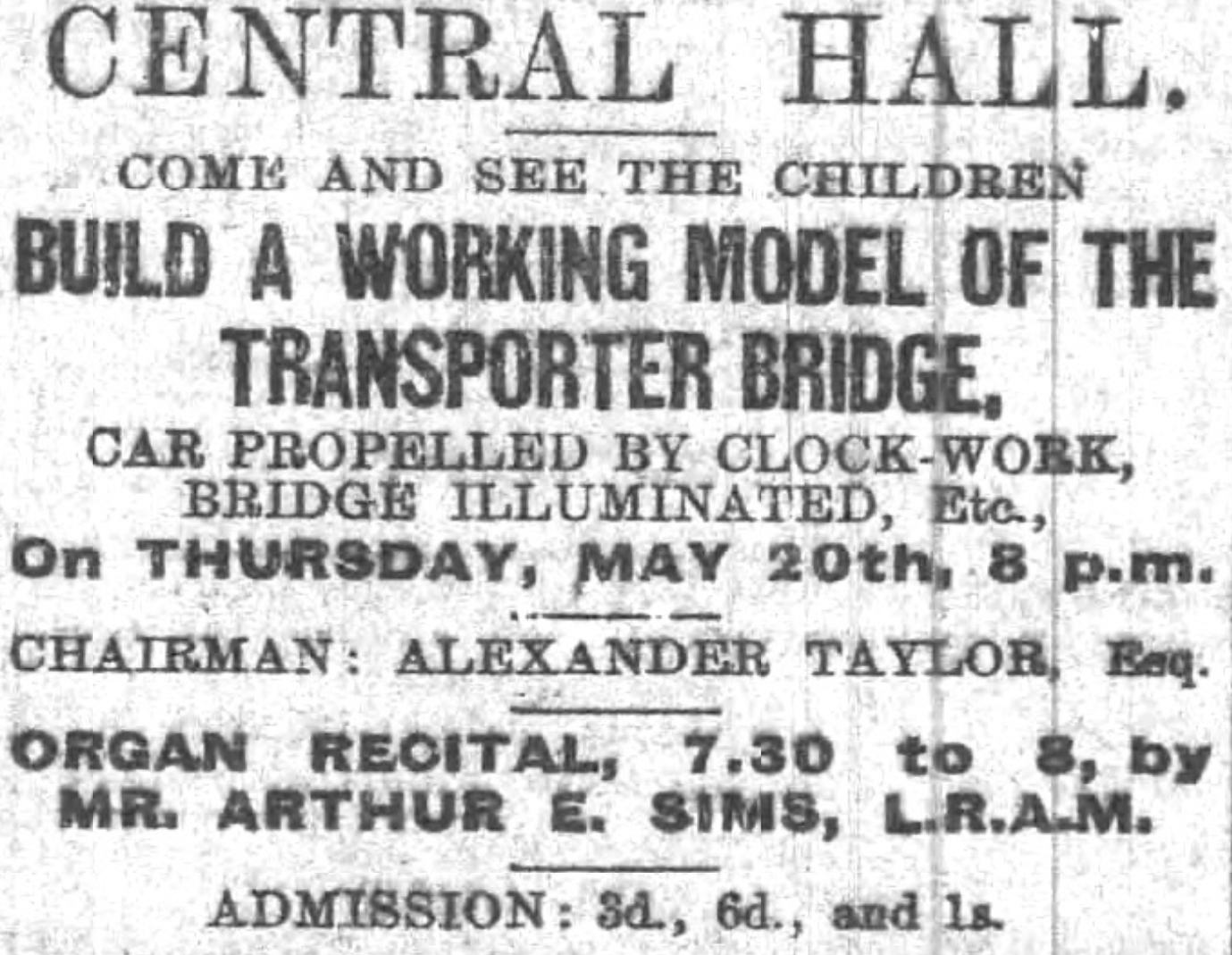
A large audience visited the Central Hall to view a working model of the Transporter Bridge.
The programme consisted of a pretty composition entitled, “The Building of the Transporter,” by the Rev. W. G. Martin, pastor of Portland Street Church. The piece, which is the form of a cantata, comprising recitations, solos and choruses, was excellently presented, and the effect was considerably enhanced by the construction on the platform of an excellent model of the Newport Transporter Bridge. The different parts of the model, which is the work of Mr Wm. Parry, Price Street, a member of the Portland Street Chapel and represents several months’ study and work, were gradually added as the theme of the cantata developed…On completion the model is 11ft high with a span of 10 feet and at the close, when the car is propelled by clockwork from one side of the bridge to the other, a distinct sense of realism is lent to the production.
— South Wales Argus Friday 21st May, 1909

Lack of Signs
Three years after the opening of the Transporter Bridge, someone wrote to the South Wales Argus to complain about the lack of signs on each approach to the bridge indicating operating hours.
Sir — Will you allow me space in your valuable paper to call attention to a little oversight on the part of the Corporation for not placing a notice on each side of the Transporter Bridge for the purpose of informing the public that the car only runs at certain hours, and is not open to traffic all day on Sunday? It is hardly necessary to state that ignorance of the rules causes great inconvenience to persons who may prefer the route across the Bridge, when, as it happened last Sunday with myself, I waited to cross and found I could not do so, and to those who may take a walk across the Newport Bridge and in their ignorance of the rules have to turn back when they arrive at the Transporter, and find the car is not crossing between the hours of 10am and 2pm — an exceptionally awkward time, I should imagine to stop traffic. Two gentlemen, who were quite ignorant of the rules of the bridge, and who had been waiting from noon until 1pm, said that over 20 persons had turned back during the hour they had been waiting there. I was a little more fortunate than most of them as I had a cycle with me. It would cost very little to print two notices.
C.H. Williams
Somerton Road, Cross Hands
— South Wales Argus, Tuesday 10th August, 1909
According to an article in the South Wales Argus in 1906, just a month after opening, the Corporation had approved the lack of running between 10am and 2pm. It was linked in an article about the Electricity and Tramways Committee wanting to limit hours on a Sunday.
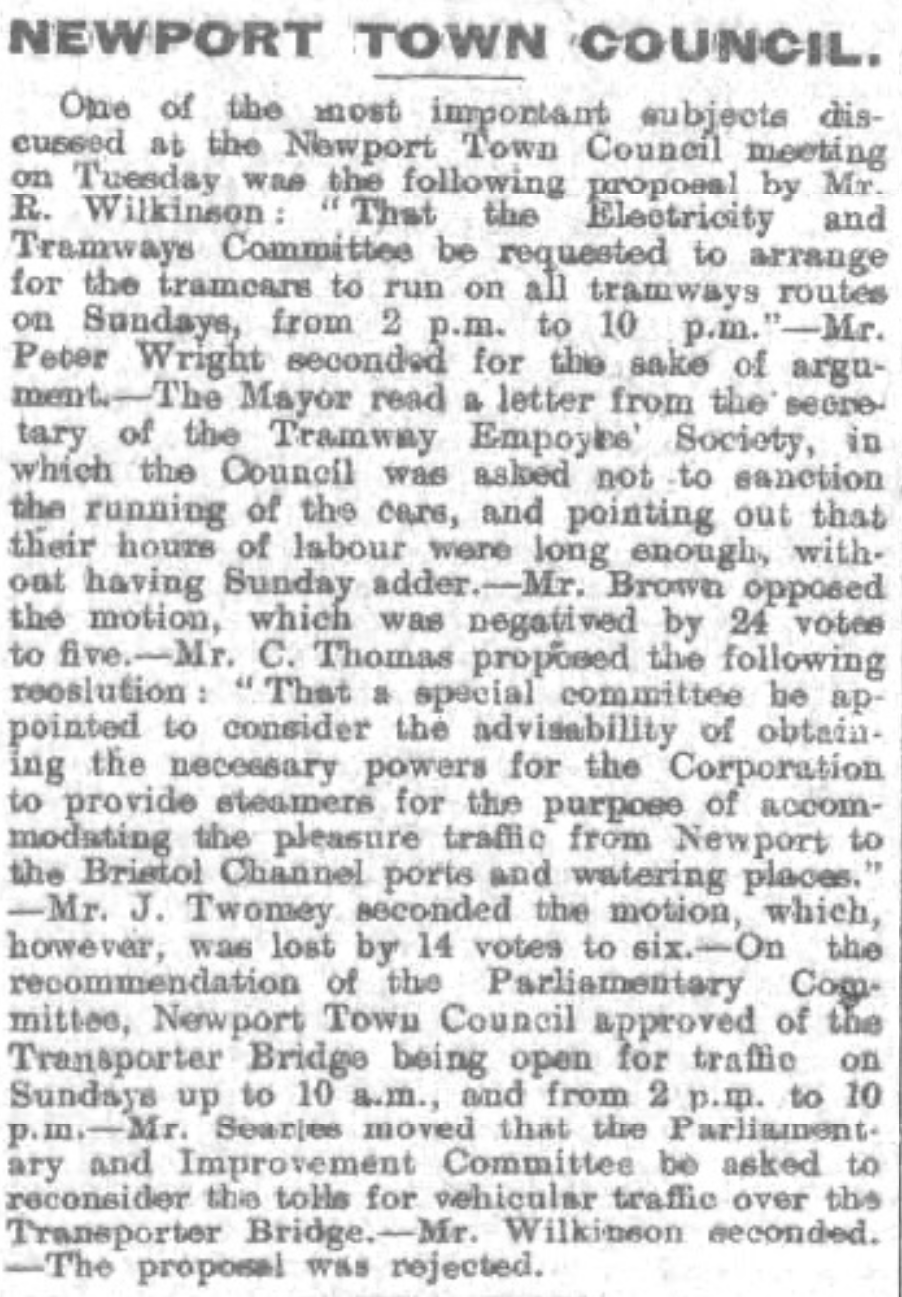

The Introduction of Lattice Gates
In June 1909, the Corporation held meetings regarding the bridge and there was a mention of the installation of ‘lattice gates’ as a way of having an ‘important bearing on receipts of the bridge’. Based on the footage earlier in this article where there isn’t a gate at the entrance of bridge, this may be when the gates were installed which are still present today.
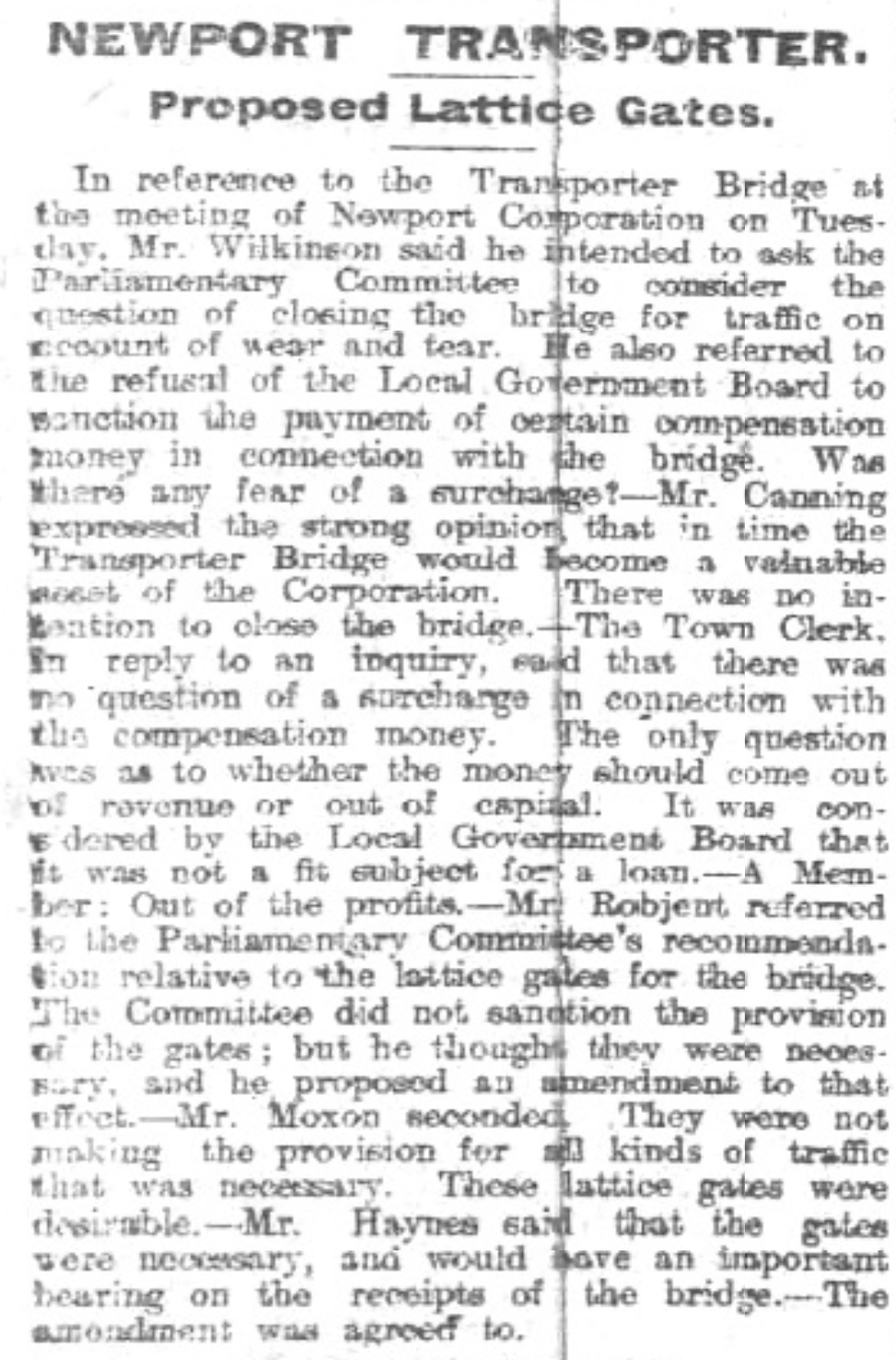
Like This Content?
Like articles like this? The aim is to publish a weekly Newport Cornucopia featuring anything of interest along with longer articles such as this. If you want to be alerted to new articles, sign up for free below.

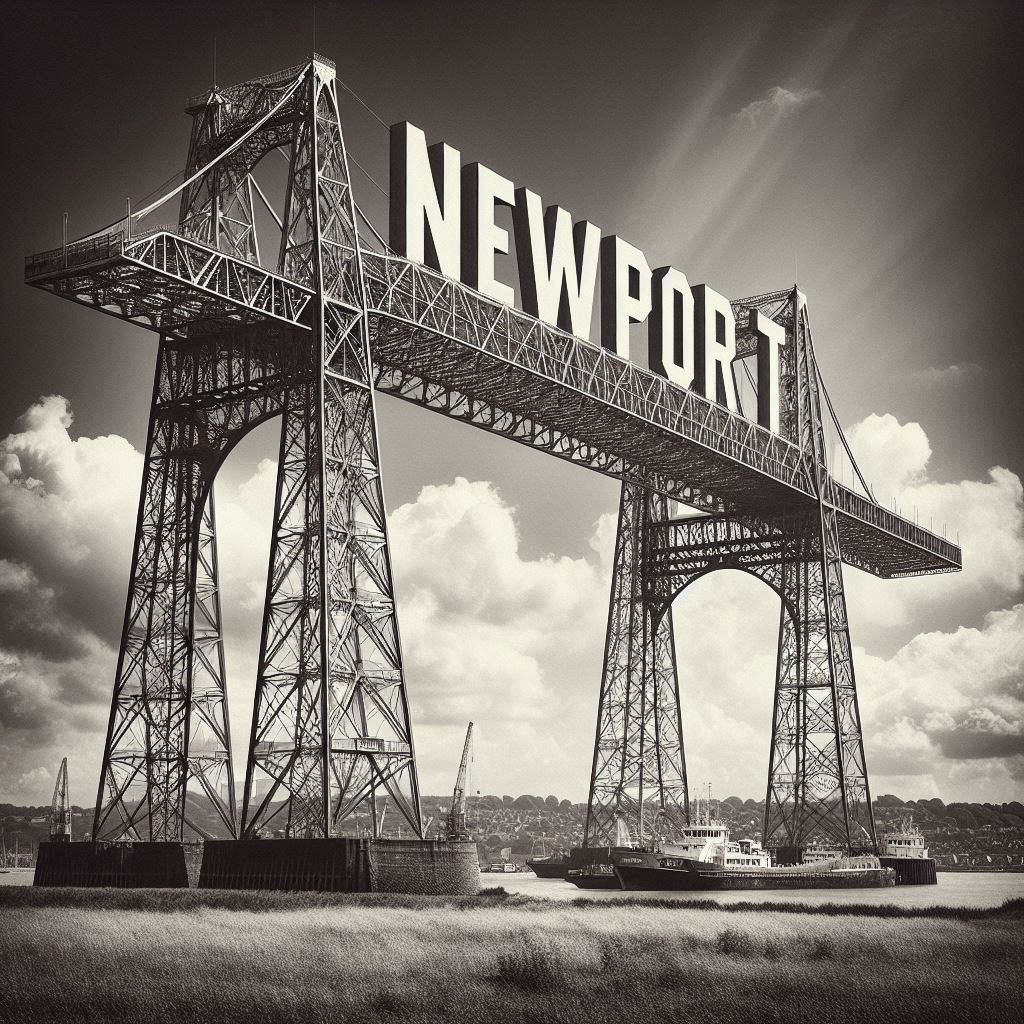
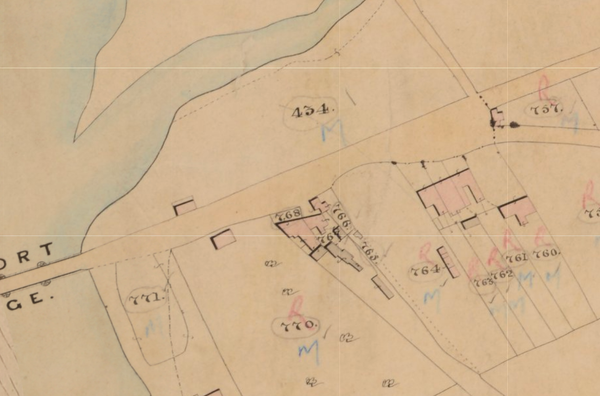
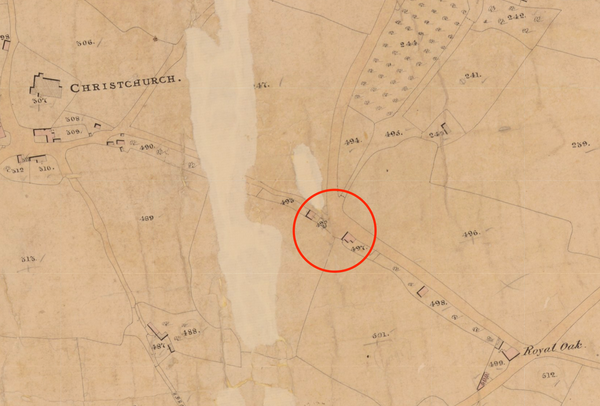
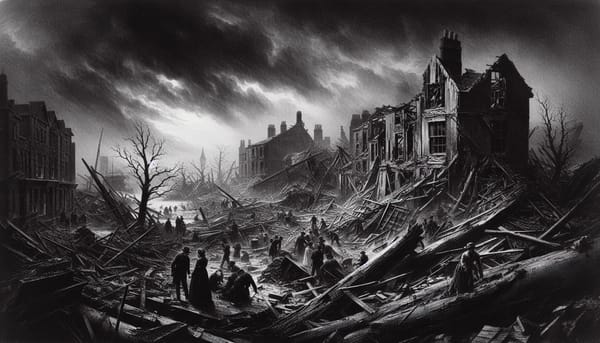
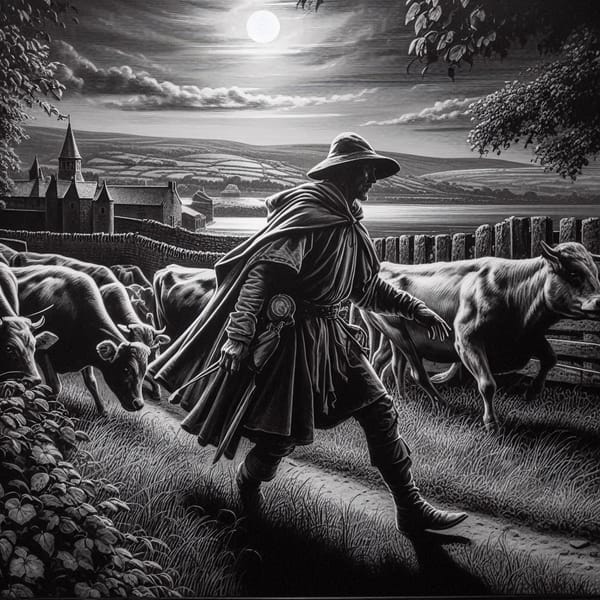
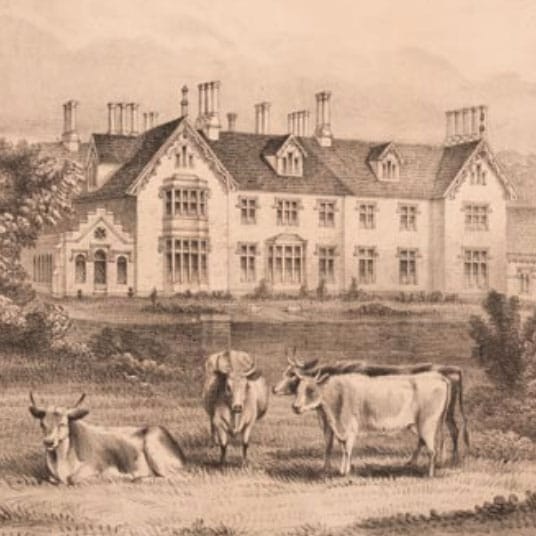

Member discussion